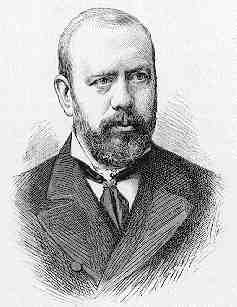John
Pettie
(17
March 1839 - 21 February 1893)
John Pettie was
a Scottish painter. He was born in Edinburgh,
the son of Alexander and Alison Pettie.
In 1852 the family moved to East Linton,
Haddingtonshire, and a portrait by the
lad of the village carrier and his donkey
overcame his father's objections to art
as a career for his son.
When
sixteen he entered the Trustees Academy
in Edinburgh, working under Robert Scott
Lauder with William Quiller Orchardson,
J. MacWhirter, W. M. Taggart, Peter Graham,
Tom Graham and George Paul Chalmers. |
|
 |
His
first exhibits at the Royal Scottish Academy were
A Scene from the Fortunes of Nigel
one of the many subjects for which he sought inspiration
in the novels of Sir Walter Scott and two portraits
in 1858, followed in 1859 by The Prison.
To the Royal Academy in 1860 he sent The Armourers;
and the success of this work and What d'ye
Lack, Madam? in the following year, encouraged
him to settle in London (1862), where he joined
Orchardson.
In
1866 he was elected an Associate of the Royal Academy,
and in 1874 received full academical honors in succession
to Sir Edwin Landseer. His diploma picture was Jacobites,
1745. Pettie was a hard and rapid worker,
and, in his best days, a colorist of a high order
and a brilliant executant. In his early days he
produced a certain amount of book illustration.
His connection with Good Words began in 1861, and
was continued until 1864.
With J. MacWhirter he illustrated The Postman's
Bag (Strahan, 1862), and Wordsworth's
Poetry for the Young (Strahan, 1863). His
principal paintings, in addition to those already
mentioned, are Cromwell's Saints (1862);
The Trio (1863); George Fox
refusing to take the Oath (1864); A
Drumhead Courtmartial (1865); The
Arrest for Witchcraft (1866); Treason
(1867); Tussle with a Highland Smuggler
(1868); The Sally (1870); Terms
to the Besieged (1872); The Flag of
Truce (1873); Ho! Ho! Old Null and
A State Secret (1874); A Sword and
Dagger Fight (1877); Disbanded
(1877);
The Death Warrant
(1879); Monmouth and James II (1882);
The Vigil (1884); Challenged
(1883); The Chieftain's Candlesticks
(1886); Two Strings to Her Bow (1887);
The Traitor and Sir Charles Wyndham as David
Garrick (1888); and The Ultimatum
and Bonnie Prince Charlie (1892).
Pettie died at Hastings on the 21st of February
1893. In 1894 a selection of his work was included
in the Winter Exhibition of the Royal Academy. His
self-portrait is in the Tate Gallery.
|
|
|